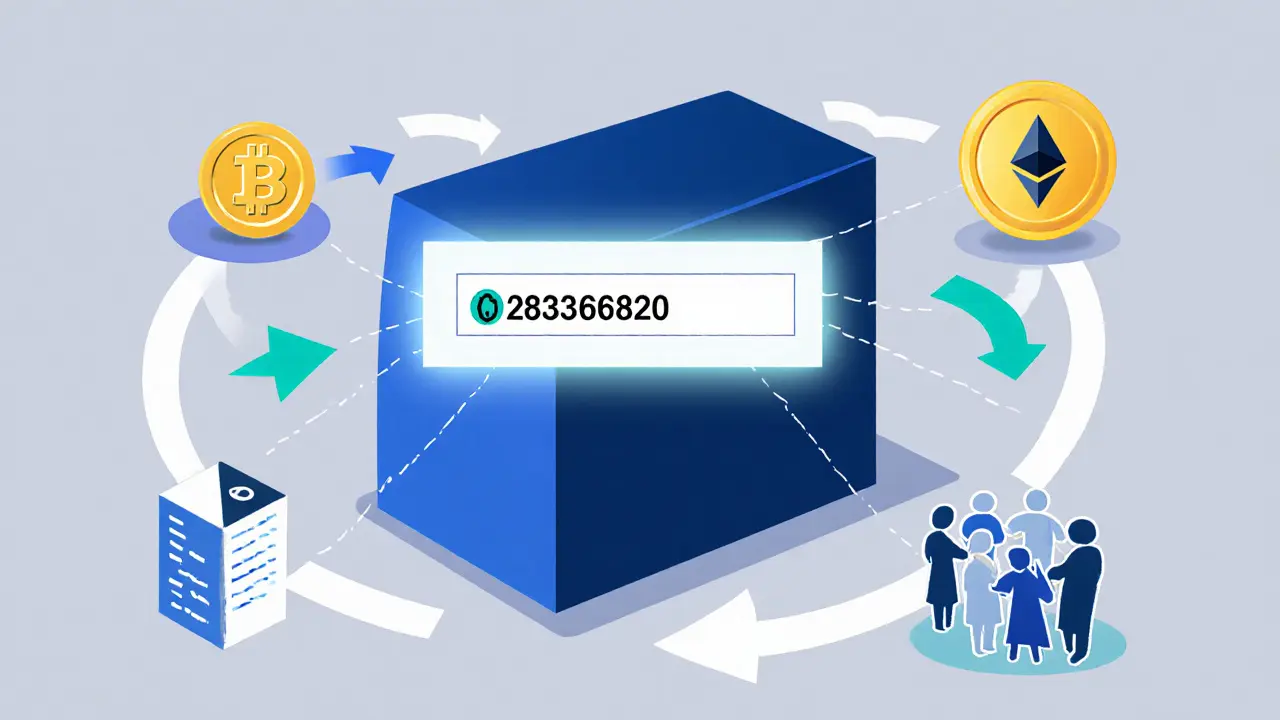Understanding Ethereum Smart Contracts: How They Work
 Jan, 6 2025
Jan, 6 2025
Ethereum Gas Cost Calculator
How It Works
This calculator estimates gas costs based on EVM operations. Each operation has a fixed gas cost. Total gas = Sum of individual operation costs + contract deployment overhead.
What This Means
Your estimated gas cost: 0 gas
At current Ethereum gas price ($1500 Gwei), this costs 0 ETH
* Actual cost may vary based on network conditions
Ever wondered why you can send money, trade tokens, or vote in a DAO without a middleman? The secret sauce is the Ethereum smart contracts that run automatically when the right conditions appear. This guide walks you through exactly how those contracts live, move, and enforce agreements on the Ethereum blockchain.
What Is an Ethereum Smart Contract?
Ethereum smart contract is a self‑executing piece of code stored at a unique address on the Ethereum blockchain. It contains both functions (the actions it can perform) and state (the data it remembers). When a transaction meets the contract’s built‑in "if/when…then" rules, the contract fires automatically, updating the ledger without any human touch.
How the Ethereum Virtual Machine (EVM) Runs Contracts
Ethereum Virtual Machine (EVM) is the sandbox where every contract lives. Every node in the network executes the same bytecode, guaranteeing that results are identical everywhere. Because the EVM is deterministic, you can trust that a contract that succeeded on one node will succeed on all others.
Core Building Blocks in Solidity
Developers write contracts primarily in Solidity, a high‑level language that compiles down to EVM bytecode. A typical contract includes:
- State variables - persistent data like
uint256 public count; - Functions - public or internal actions that can change state or just read it
- Special variables -
msg.sender(who called),msg.value(Ether sent),block.timestamp(current block time) - Modifiers - reusable checks such as
require(msg.sender == owner)
When you call a function, the EVM verifies the transaction, deducts the required gas fee, runs the code, and writes the new state to the blockchain.
From Code to Chain: The Development Lifecycle
Here’s the usual flow:
- Write the contract in Solidity (or Vyper for a Python‑like syntax).
- Compile with
solcor an IDE like Remix, producing bytecode and an ABI (Application Binary Interface). - Test on a local network (Hardhat, Foundry) or a public testnet such as Sepolia.
- Deploy with a wallet (MetaMask) by sending a special transaction that carries the bytecode.
- Interact via the contract’s address and ABI using web3 libraries.
Deployment itself is a transaction, so you must pay gas. Because contracts are larger than a normal ETH transfer, the fee is higher-often a few dollars on mainnet, less on testnets.

Solidity vs. Vyper: Quick Comparison
| Feature | Solidity | Vyper |
|---|---|---|
| Syntax style | C‑like, familiar to JavaScript/Java developers | Python‑like, stricter indentation |
| Inheritance support | Multiple inheritance with linearization | Single inheritance only |
| Built‑in safety checks | Explicit require and assert |
All overflow checks are automatic |
| Community tooling | Extensive (Remix, Hardhat, Truffle) | Smaller but growing (Vyper compiler, Brownie) |
| Adoption in production | Dominant language for DeFi, NFTs, DAOs | Used for high‑security contracts |
Calling Other Contracts and Precompiled Contracts
Because every contract has a public address, contracts can call each other just like APIs. This composability lets developers build layers of abstraction-think of a token contract that talks to a governance contract, which in turn talks to a price‑oracle contract.
Ethereum also includes precompiled contracts at fixed addresses (e.g., 0x01 for ecrecover). They run native code inside the EVM, providing cheap implementations of cryptographic functions and other common utilities.
Bringing Real‑World Data On‑Chain: Oracles
Smart contracts cannot fetch external data on their own. To stay deterministic, they rely on oracles-trusted services that push off‑chain information (price feeds, weather, sports results) into the blockchain. Projects like Chainlink aggregate multiple data sources, sign the result, and expose it through a contract call.
Token Standards: ERC‑20 and ERC‑721
Most tokens are just smart contracts that follow a standard interface. ERC‑20 defines functions like transfer and balanceOf for fungible tokens. ERC‑721 does the same for non‑fungible tokens (NFTs), adding ownership metadata for each unique token ID.
Because the standards are baked into the contract ABI, wallets, DEXes, and marketplaces can interact with any compliant token without custom code.
Limitations to Keep in Mind
- Size cap: Contracts cannot exceed 24 KB of bytecode. Large systems split logic across several contracts or use patterns like the Diamond Standard.
- Gas costs: Complex operations consume more gas, making heavy computations expensive.
- Immutability: Once deployed, a contract cannot be altered. Bugs require a new contract and a migration plan.
- Off‑chain reliance: Anything not handled by an oracle stays out of reach.
Quick Deployment Checklist
- Choose Solidity version and lock it in the pragma.
- Run static analysis (Slither, MythX) for common vulnerabilities.
- Test all functions on a local network; cover edge cases with
requirestatements. - Estimate gas with
eth_estimateGasand set a comfortable gas limit. - Deploy via a wallet with enough ETH for the full deployment cost.
- Verify the source code on Etherscan for transparency.
Frequently Asked Questions
Can I change a smart contract after it’s deployed?
No, the code is immutable. To upgrade you must deploy a new contract and point users to the new address, or use a proxy pattern that delegates calls to an implementation contract you can swap.
What is the role of gas in smart contract execution?
Gas measures the computational work each operation requires. You pay gas in ETH, and the network uses it to prevent abuse and reward miners/validators.
How do oracles keep data trustworthy?
Reputable oracle services aggregate data from multiple sources, sign the result with cryptographic proofs, and publish it on‑chain, making tampering difficult.
Is Solidity the only language for Ethereum contracts?
Solidity dominates, but you can also write contracts in Vyper, Yul, or even compile from languages like Fe. All compile down to EVM bytecode.
What’s the difference between a transaction and a contract call?
A regular transaction moves ETH between accounts. A contract call includes data that invokes a function, potentially changing state and consuming more gas.
Wayne Overton
October 25, 2025 AT 20:16Allison Andrews
October 26, 2025 AT 08:33Alisa Rosner
October 26, 2025 AT 15:03MICHELLE SANTOYO
October 27, 2025 AT 09:24Lena Novikova
October 28, 2025 AT 01:46Kevin Johnston
October 28, 2025 AT 17:59Dr. Monica Ellis-Blied
October 29, 2025 AT 07:48